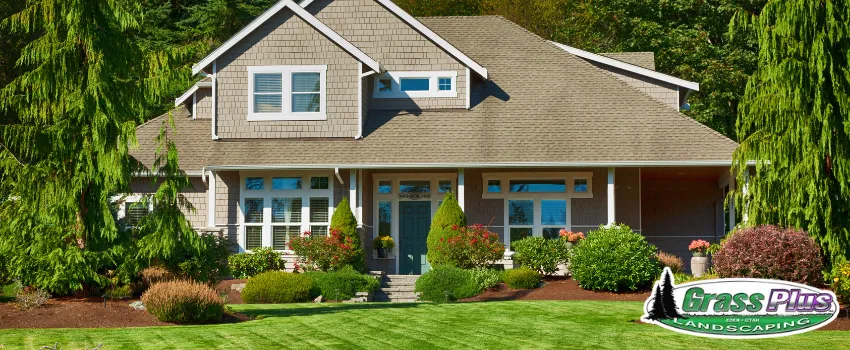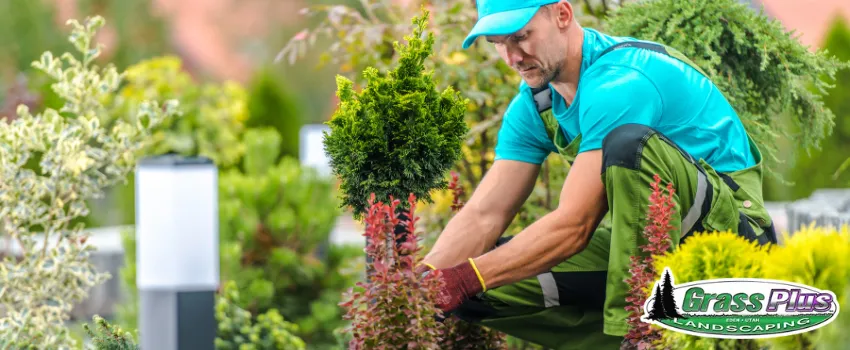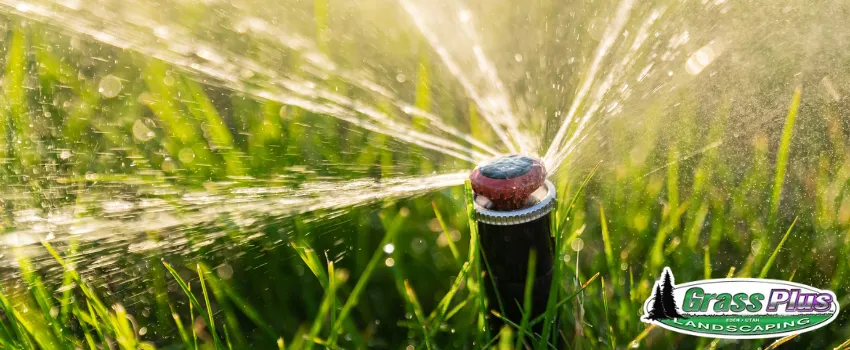A lush lawn can create a lasting positive impression on your home, particularly during the warmer months when outdoor activities are abundant. Yet, achieving this desired outcome demands meticulous landscape care and, most importantly, a well-designed irrigation system.
What Are the Goals and Objectives of Landscaping?
Landscaping aims to:
1. Enhance Home Visual Appeal
Landscaping elevates a property’s physical appearance by strategically arranging plants, hardscape, and other outdoor elements. With the right colors, textures, and focal points, landscaping can transform outdoor spaces into captivating areas that leave a positive impression.
2. Create Functional Outdoor Spaces
A primary goal of landscaping is to establish functional areas within a home’s outdoor environment. This involves designing relaxation, recreation, and entertainment spaces like patios, decks, and sitting areas.
3. Promote Environmental Sustainability
Landscaping endeavors to balance human desires with the environment’s health. It involves using native plants, implementing eco-friendly practices, and minimizing water consumption through an efficient landscape irrigation system.
4. Improve Energy Efficiency
Strategic landscaping is an effective way of conserving energy. When trees and shrubs are planted to provide shade, the need for excessive heating or cooling is reduced, resulting in lower energy bills.
What Is the Advantage of Landscape Management?
Landscape management offers several benefits that extend beyond a property’s visual appeal. For starters, it ensures the health of your plants, resulting in a sustainable and thriving environment.
Effective landscape management also contributes to reduced water consumption through optimized irrigation systems. Finally, well-maintained landscapes help increase the value of your home because they foster a positive impression on prospective buyers.
How Does the Climate Affect the Landscape?
The climate profoundly impacts the landscape, shaping its physical features and overall ecosystem dynamics. Warm weather tends to support tropical and subtropical vegetation, while cold climates often favor the growth of coniferous forests and hardy plant species.
In short, climate serves as a fundamental driver of a landscape’s appearance and biodiversity.
How Is Climate Change Affecting the Land and Soil?
Climate change is exerting significant effects on land and soil systems. In particular, rising global temperatures lead to increased evaporation and shifts in precipitation patterns. These changes contribute to severe droughts in some regions while causing intense rainfall and flooding in others. As a result, these extreme conditions disrupt soil stability, promoting erosion which diminishes agricultural productivity and degrades ecosystem health.
What Are the Things to Consider in Achieving an Attractive Landscape?
When attempting to create an attractive landscape, you should consider the following:
1. Plant Selection and Arrangement
Careful consideration of plant types, sizes, and colors is essential for any landscape to look appealing. Given this, you should choose plants that thrive in your climate and complement each other in bloom times, textures, and heights.
2. Texture and Form
Incorporate plants with diverse textures into your lawn, especially those with smooth leaves and delicate petals. Contrast these plant types against mounding shrubs to create visual excitement and variety.
3. Pathways and Flow
Consider the flow of movement throughout your landscape. Design curved paths and meandering walkways to evoke a sense of discovery and engagement.
4. Lighting at Night
Think about how your landscape will appear after dark. To accentuate its key features, place outdoor lighting in strategic areas and see a unique ambiance being created during the evening hours.
How Can You Prevent Landscape Issues?
Problems with your landscape can be avoided if you:
1. Choose the right type of plants.
Opting for plants suited to your local climate, soil type, and maintenance capabilities is paramount. Also, choose species that fit the available space, considering factors like sun exposure and soil drainage.
2. Develop and follow regular maintenance practices.
Regular activities such as watering, fertilizing, pruning, and mulching contribute to your plants’ health and the overall landscape. Also, attending to minor concerns promptly can prevent them from escalating into larger problems.
3. Check the area for early signs of diseases.
Be attentive to changes in plant color and growth patterns, as these could indicate the presence of pests. Identifying problems early allows treatments to be provided promptly, minimizing the spread of diseases.
4. Maintain adequate soil health.
Healthy soil is the foundation of a thriving landscape. As such, regularly test soil pH, structure, and nutrient levels to ensure optimal conditions for plant growth.
5. Address drainage concerns immediately.
Proper drainage is essential to prevent water accumulation that can damage plants. In this regard, ensure that your landscape is graded properly so excess water is directed away from susceptible areas. For this, consider installing features like French drains.
Is Hiring a Professional Landscaper Worth It?
Engaging the services of a professional landscaper can yield substantial results that make the investment well worthwhile.
Experienced landscapers possess a deep understanding of design principles, plant selection, and proper maintenance techniques, helping your landscape achieve its full potential. Their expertise can lead to creating a visually appealing lawn design that harmonizes with your property’s architectural arrangement.
How Do You Set Up a Landscape Irrigation System?
Setting up a landscape irrigation system involves a systematic process to ensure efficient water distribution throughout your outdoor space. Begin by assessing the layout of the area and its water needs, considering factors such as plant types, soil condition, and sun exposure.
The next step is determining the type of irrigation system appropriate for the area. Based on this, you can plan the system layout, divide the landscape into zones with similar water requirements, and install the necessary components, including pipes and valves.
What Is Irrigation Assessment?
Irrigation assessment is the evaluation of the efficiency and sustainability of irrigation systems employed in agricultural, landscaping, and environmental management contexts. It involves a combination of field observations, data collection, and analysis, so informed decisions can be made to gain economic and environmental benefits in water management practices.
How Do You Evaluate the Effectiveness of an Irrigation System?
Evaluating the effectiveness of an irrigation system involves a systematic analysis of its performance and impact on the intended application. The assessment encompasses water distribution uniformity, application efficiency, soil moisture monitoring, and overall water-use efficiency.
What Are Some Problems Associated With Irrigation?
Some of the common irrigation problems include:
1. Over-Watering and Under-Watering
Over-watering occurs when an irrigation system delivers more water than necessary, potentially leading to water-logging, adversely affecting plant health. Under-watering results from an insufficient water supply, causing decreased crop yields and compromised landscape aesthetics.
2. System Malfunctions
Irrigation systems can experience technical glitches like faulty timers and misaligned nozzles. These can disrupt water distribution patterns, causing some areas to receive too much water while others get too little.
3. Leaks
Leaks can lead to water wastage, increased operational costs, and reduced system performance. If left unaddressed, erosion and infrastructure damage will likely happen.
4. Uneven Water Distribution
This can stem from factors like improper nozzle selection and inadequate system design. Uneven water distribution often results in irregular plant growth and reduced crop yields.
How Do You Troubleshoot an Irrigation System?
Troubleshooting an irrigation system involves identifying and rectifying existing issues to ensure efficient operation. The first step is to conduct a visual inspection of the entire system, checking for leaks or misaligned components.
The system’s water pressure and flow rate are examined next to pinpoint potential blockages or any pressure-related problems. From here, the individual zones are tested to see if there are malfunctioning valves or clogged nozzles. The timer or controller settings are also monitored to ensure they are programmed correctly.
What Decreases Property Value the Most?
Several factors substantially decrease property value, but one of the most impactful is the deterioration of the surrounding neighborhood. Increased crime rates, inadequate infrastructure, and limited access to amenities usually characterize this.
Potential buyers and investors often prioritize well-kept neighborhoods with convenient access to schools, shopping centers, and transportation, but a deteriorating community can discourage them. Therefore, maintaining neighborhood safety is crucial for enhancing the value of a property in any given area.
What Is the Effect of Landscape Plants on Perceived Home Value?
A well-designed landscape can enhance the curb appeal and aesthetics of a property. When plants are strategically placed, they can add color and vibrancy to the home, making it more charming.
A carefully-landscaped yard also implies that the property is well-cared for, suggesting a level of maintenance that resonates positively with buyers and can potentially arouse their interest.
The Bottom Line
Similar to renovation endeavors, landscaping work can help elevate home value. However, to ensure that potential buyers appreciate this, opting for practical enhancements like an irrigation system is best.
In this regard, consider partnering with a professional landscaping company when it comes to your irrigation system design requirements. They can utilize advanced technologies to ensure precise water delivery control and monitor the irrigation system’s overall performance.
Plan your next big landscaping venture with Grass Plus, Inc.
To ensure optimal water utilization for your home garden, you need a fully-functional irrigation system. If you don’t know how this can be installed, Grass Plus, Inc., will gladly help you.
Our services for landscaping in Liberty, Utah, can include installing a beautifully-designed irrigation system if this is what you require. We have been in this business for over three decades and know what works best for our clients. Call us now.








